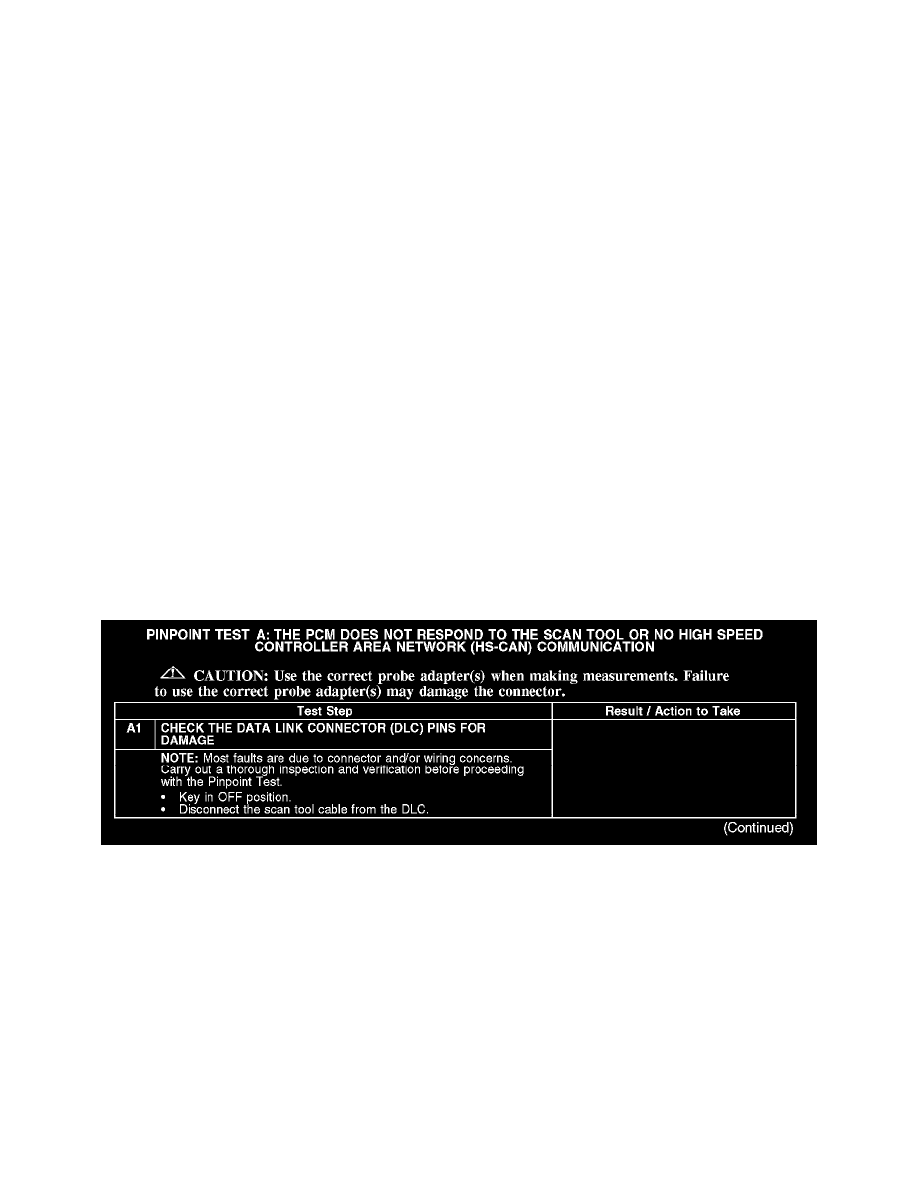Mariner 2WD V6-3.0L (2008)

Information Bus: Pinpoint Tests
Test A: The PCM Does Not Respond To The Scan Tool Or No High Speed Controller Area Network
(HS-CAN) Communication
PINPOINT TEST A: THE PCM DOES NOT RESPOND TO THE SCAN TOOL OR NO HIGH SPEED CONTROLLER AREA NETWORK
(HS-CAN) COMMUNICATION
Normal Operation - Escape and Mariner
The PCM communicates with the scan tool through the high speed controller area network (HS-CAN). Circuits VDB04 (WH/BU) (HS-CAN +) and
VDB05 (WH) (HS-CAN -) provide the network connection to the PCM. The PCM shares the HS-CAN network with the ABS module, the four wheel
drive (4WD) control module, restraints control module (RCM), occupant classification sensor module, power steering control module and the
instrument cluster. Voltage for the PCM is provided by circuits CBB28 (GY/VT) and SBB05 (GY/RD). Circuit GD122 (BK) provides ground.
Normal Operation - Hybrid
The PCM communicates with the scan tool through the high speed controller area network (HS-CAN). Circuits VDB04 (WH/BU) (HS-CAN +) and
VDB05 (WH) (HS-CAN -) provide the network connection to the PCM. The PCM shares the HS-CAN network with the ABS module, restraints
control module (RCM), occupant classification sensor module, power steering control module, transmission control module, traction battery control
module (TBCM) and the instrument cluster. Voltage for the PCM is provided by circuits CBB29 (WH/VT) and SBB05 (GY/RD). Circuit GD122
(BK) provides ground.
This pinpoint test is intended to diagnose the following:
-
Fuse
-
Wiring, terminals or connectors
-
ABS module
-
4WD control module (if equipped)
-
Instrument cluster
-
PCM
-
RCM
-
Power steering control module
-
Occupant classification sensor module
-
TCM (Hybrid only)
-
TBCM (Hybrid only)
A1
